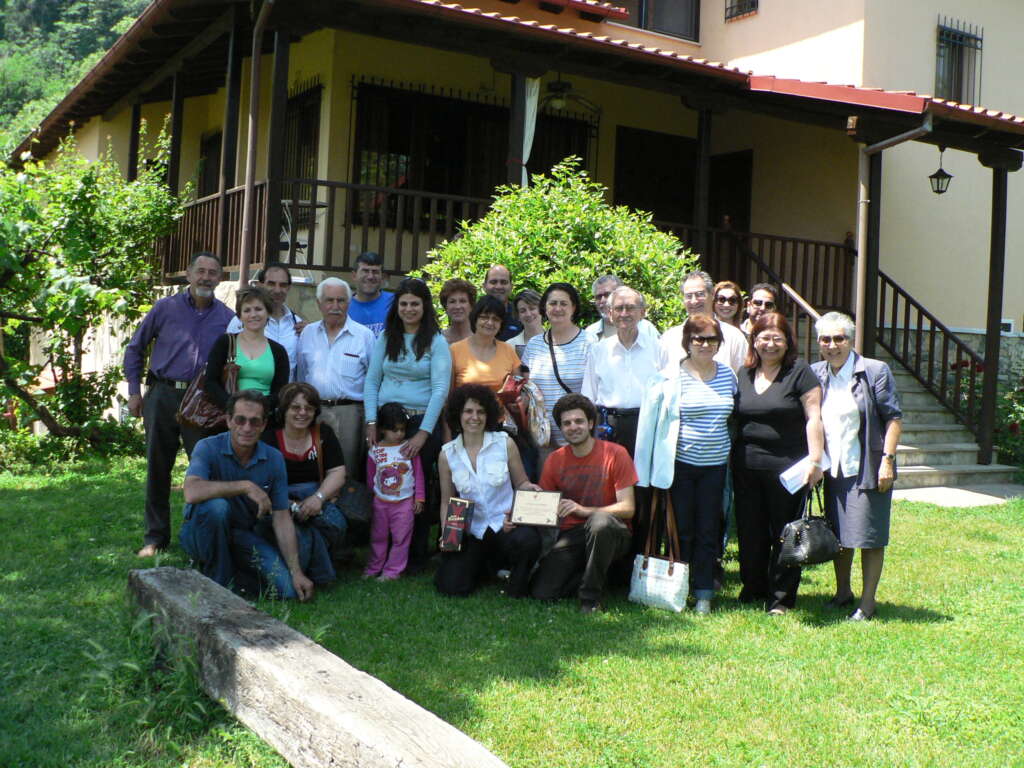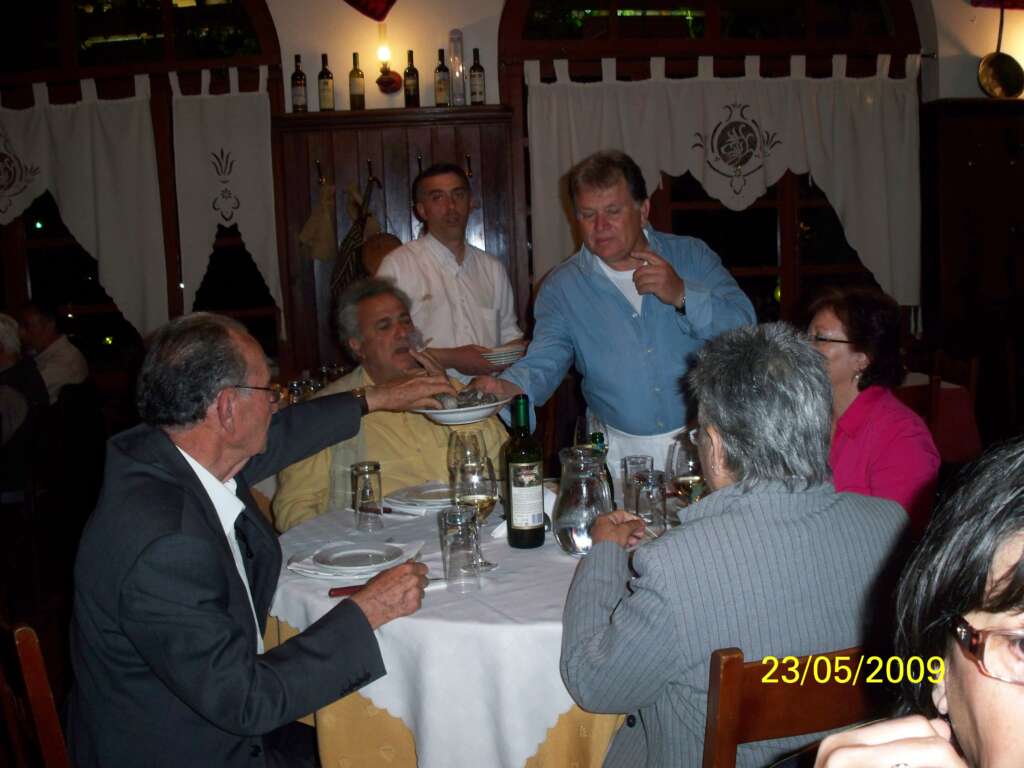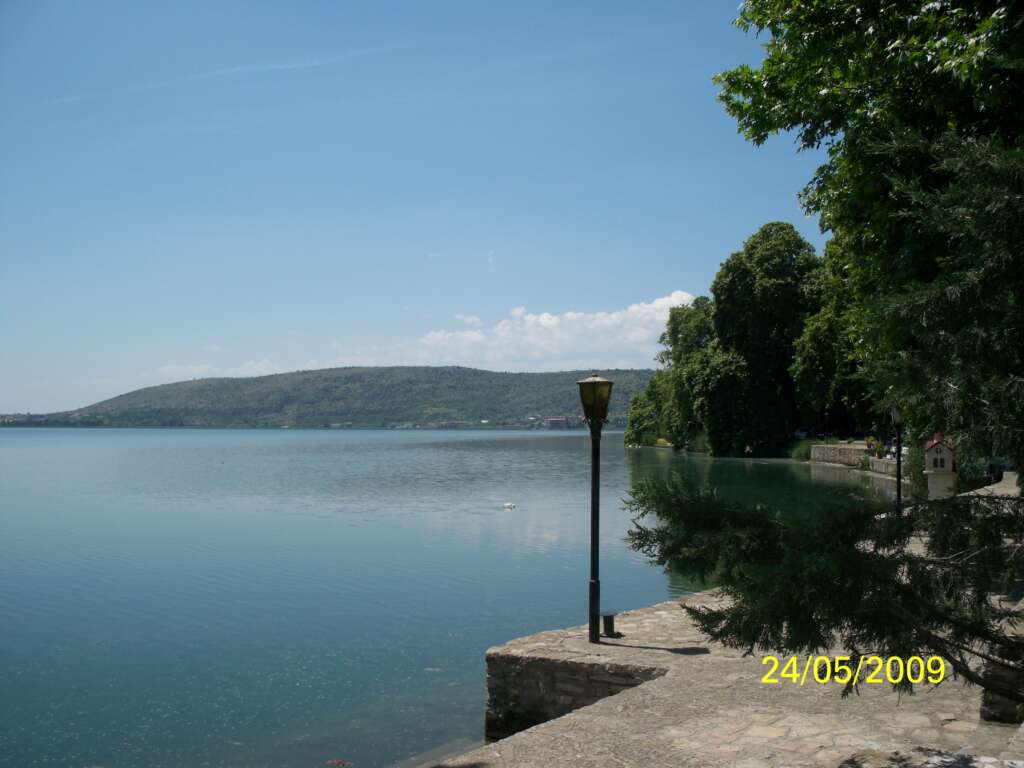During the previous trip organised by the Cyprus Oenophine Association, it was proposed to organise a new one in 2009 that would begin with a visit to Katogi Averoff in Metsovo followed by a road trip to the Wine Routes of Western Macedonia and Epirus.
So, after the announcement of the trip and the immense demand for participation, we began our journey to the Wine Routes of Epirus, Naoussa, and the Lakes, on 20th May 2009.
We arrived in beautiful Thessaloniki at approximately 9:00 am on May 20th and boarded the bus for the most famous area of Northern Greece, Xinomavro. Our driver was Mr Vasilis, a collaborator of Seavilization (whom we had already met during our previous trip), and our guide was Ms Despina Papadima, the owner of Seavilization.

We arrived at our first stop, Dalamaras Estate in Naoussa, where the fifth generation of vine-growers continue the family tradition in viticulture and the production of wine and tsipouro. We tasted the wines Lefkos Dalamara and Paliokalias Dalamara and had lunch at the Estate’s traditional restaurant, experiencing our first taste of Western Macedonia’s cuisine.
Our next stop was Rodochori, a village in the Imathia region, where we visited Argatia Winery, located at an altitude of 600 meters. This is a small, modern, family-run winery whose owners, Panagiotis Georgiadis and Dr Haroula Spinthiropoulou, are people with extensive knowledge of the Naoussa area. They care passionately for their land and produce their own wine based on the principle of cooperation with their fellow villagers to serve the common good. We tasted all three wines produced at the winery: Argatia White, Argatia Red, and Xinomavro Argatia.
In the afternoon, we visited the vineyard of the legendary Kir-Yiannis, in Yiannakochori. We were given a tour of the winery and the exemplary linear vineyard. In the middle of the Estate stood a watchtower, the so-called “koula” or “dragatsa”, from where, some centuries ago, the Estate’s Turkish owner was able to survey all the land and its produce.

We tasted the red dry Diaporo, the “Two Olives”, the “Four Lakes”, and the famous rosé Akakies all of which were accompanied by delicious fruits produced by the Estate.
We left Kir-Yiannis’Estate, truly impressed by its vineyard and wines, and set off for Veroia, where we had planned to spend the night.
However, as we approached Veroia, we noticed that Vergina’s Royal Tombs were just a breath away from the city, so we changed our plans and decided to stop to visit them.
Indeed, for those among us who were visiting the royal tombs for the first time, the visit was a unique experience. Our guide was a young archaeologist-historian who impressed everyone with his knowledge and unique theatrical way of describing the various artefacts. We were enthralled by the view of the unlooted RoyalTombs and their artefacts of outstanding beauty.

Late in the evening, we checked into our hotel and shortly afterwards had dinner in one of Verroia’s traditional taverns. Here, although the platters of food were not generous in size, for those people lucky enough to try them, the lamb chops were of good quality.
On Thursday, we set off first thing in the morning for the Wine Route of the Lakes and the region’s top winery, Alpha Estate, located on the shores of Vegoritida Lake. We were particularly impressed by the development and application of modern vineyard management techniques regarding irrigation and plant protection. The Estate has 170 km of standard underground irrigation system and possesses a weather station that electronically sends temperature and humidity data to an Austrian station that, following analysis of the data, sends guidelines to the Estate in terms of spraying for pest and disease prevention. At this Estate, we tasted the wines Alpha Estate red, Alpha Estate white, Alpha Syrah, and Alpha Omega white sweet.
Following this, we visited the beautiful Edessa and its waterfalls and continued our trip to the village of Sklithro and Xino Nero, situated between Amyndeon and Kastoria. We had lunch at “Thomas Tavern”, one of the best dining options in northern Greece. The restaurant has unique decoration with exquisite period furniture and owns the richest wine cellar in the Greek province with over 365 wine labels. We particularly enjoyed the appetisers and the pork shank.

We later departed for Metsovo, crossing the Mountains of Pindos. We encountered dense forests of coniferous and deciduous trees, admired the rocky slopes and the impressive, still snow-covered, mountain peaks, streams, and rivers.
Early in the evening, we arrived at the charming guesthouse of “Katogi Averoff” and, after settling into our rooms, we were invited to take an evening mystical tour of its newly renovated winery. During the tour, we were fortunate to sample the sparkling wine Flora Di Munte (the Flower of the Mountain in Vlachika) that had recently started being bottled by the historic winery. We also tasted the dry white Traminer, the red dry Ktima Averoff, and finally finished our tastings with the sweet white wine Melifrona.
The remainder of the evening was free for guests to rest or stroll through the picturesque streets of Metsovo.
Our next day began with a tour of the Folk Museum founded by Baron Ioannis Tositsas followed by a visit to the idyllic monastery of Ayios Nikolaos in the forest.

Early in the afternoon, we set off for Zagorochoria and Zitsa and visited the unique stone-built winery Glinavos, located in the forest. The hospitality we received from the Gklinavos couple was truly spectacular and we also had the opportunity to taste the Estate’s wines.
Leaving Zitsa, we headed to Aristi Mountain Resort located across Astraca’s Mountain, in Voidommatis Gorge, of western Zagorochoria. This beautiful stone-built resort of traditional Epirus architecture with its unique scenery rejuvenated us following some long hours of travel. The chef’s excellent 5-course menu paired with some magnificent views left us with the most favorable impression of the area.
The next day was dedicated to one of the most beautiful cities of Greece, Ioannina. We visited the city’s historic castle and museum, walked along the charming promenade which bordered the lake and visited the city market. We had plenty of free time to shop in the city’s small shops, enjoy a coffee in one of the cafeterias alongside the lake or even visit the island.

Early Saturday afternoon, we departed for Metsovo. Following our arrival, in the evening, we dined at “Galaxias” restaurant, a historic restaurant with Metsovian decorative elements, where the history of Metsovo’s development was written some 50 years ago. We had the chance- those of us who like them- to taste some cooked snails prepared by our President, who had hand-picked them after the overnight rain.
Sunday morning, we said goodbye to Metsovo, taking memories of the good times we spent in this unique town that will undoubtedly stay with us for a long time.
After crossing Pindos’ wild and beautiful Mountains, we headed to the charming Kastoria, a historic Byzantine town built alongside the lake bearing the same name. We walked along the path by the lake’s coast which was shaded by beech, plane, fir, pine, and chestnut trees and reached the Monastery of Panayia Mavriotissa, where we admired its beautiful frescoes.
We visited the town and admired the remarkable architecture of the mansions, remnants of Kastoria’s economic boom from the time when its furs were renowned and exported all over the world. We shopped for leather and regional vegetables.
Late in the evening, we began our homeward journey, taking with us our wonderful memories and looking forward to future travel adventures and wine experiences.
Written by the Gen. Secretary of the Association, Yiannoula Vassiliadou, from personal notes taken by her during the trip and information found online and in the brochures of the various wineries visited.
